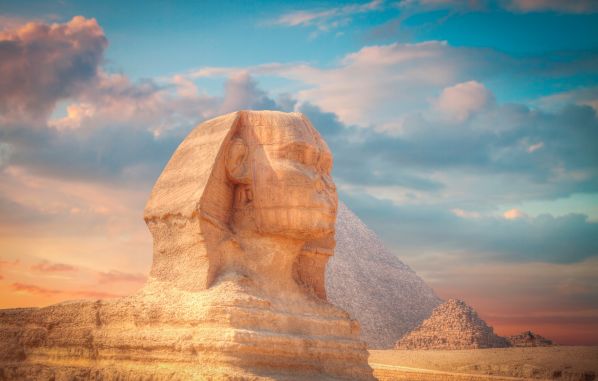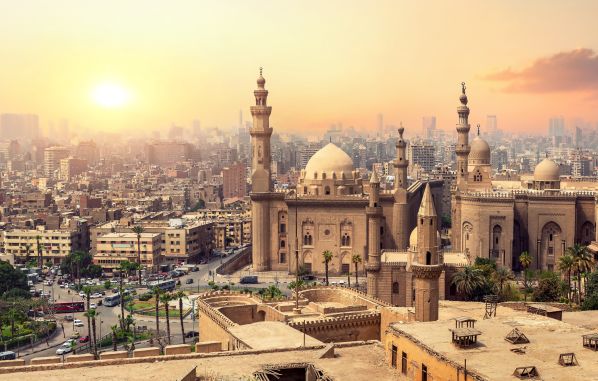Pyramids of Giza: 3 mysteries about the remains of Ancient Egypt

Ancient Egypt has always exerted a timeless fascination. At its epicenter, the Pyramids of Giza stand as guardians of mysteries and age-old secrets, attracting explorers, scientists, and travelers from around the world.
These architectural treasures, the first work considered a Wonder of the World , represent the memory of a legendary civilization and are portals to a past shrouded in enigmas on the outskirts of Cairo .
We will explore three of the most captivating mysteries surrounding the Pyramids , some of a long list of reasons that lead adventurers to embark on a journey into the unknown, into the grandeur of the Pyramids of Giza .
The construction of the Pyramids of Giza
The Great Pyramid of Giza, the Pyramid of Khafre, and the Pyramid of Menkaure are symbols of power, ingenuity, and faith, but also a historical and architectural challenge. The most persistent question is: how did they manage to build these colossal structures more than 4,500 years ago?
The Great Pyramid of Giza (Khufu) is the largest, standing at 147 meters tall , and houses the sarcophagus where Pharaoh Khufu, also known as Cheops, was buried . The second largest is the Pyramid of Khafre , built for Khufu's son, whose face is believed to be the one sculpted on the Great Sphinx . Slightly smaller, the Pyramid of Menkaure is the third of the great pyramids, the smallest in size, and represents the last great effort of the Fourth Dynasty of Egypt.

Theories abound, ranging from the use of ramps to the ingenuity of thousands of skilled workers. Some even attribute the construction to extraterrestrial influences due to the mathematical precision and monumental scale of the pyramids .
Each stone block, which can weigh several tons, was transported and fitted together with an accuracy that still baffles modern engineers. Were these workers slaves, as popular tradition suggests, or Egyptian citizens motivated by deep religious devotion ? The discovery of nearby dwellings, along with rudimentary tools, seems to indicate the latter.
And within these pyramids, the secrets don't end. In the Great Pyramid, hidden passageways and mysterious chambers like the Grand Gallery continue to raise questions . What purpose did they serve? Do they conceal undiscovered treasures or clues about the pharaoh's life? Modern technology, such as the use of thermal scanners, has revealed anomalies that suggest unexplored areas.

Astronomical orientation: A divine connection?
The geometric perfection of the Pyramids is not only visually stunning, but also reflects an advanced understanding of the cosmos. They are aligned almost perfectly with the cardinal points and the stars of Orion's Belt. This fact has led many to wonder if their construction was guided by purposes beyond the earthly realm.
In Egyptian belief, the stars were the home of the gods and the destination of the pharaohs on their journey to the afterlife . The alignment with Orion, associated with Osiris, the god of resurrection, suggests that the pyramids were more than tombs: they were gateways to immortality.
The Great Pyramid, in particular, has shafts that point directly towards specific stars , which could have symbolized the pharaoh's soul's journey to eternity .

The astronomical knowledge required to achieve this precision is astonishing. Without modern instruments, how could the ancient Egyptians have measured the sky with such accuracy? This mystery suggests that their relationship with the cosmos was more intimate than we can imagine . Observing the pyramids at dawn or dusk, when the sun seems to converse with their peaks, one senses that these structures are more than just stone: they are a bridge between the divine and the human.
Temples of Egypt with Nile Cruise (8 days / 7 nights)
The lost sarcophagi of the "aliens" Akhenaten and Nefertiti
Is it possible that the ancient Egyptians hid something too powerful or sacred to be discovered ? Yet another reason to visit the Pyramids of Giza !

Among the many mysteries of Ancient Egypt, few are as intriguing as the elongated skulls of some of its rulers, particularly Akhenaten and his wife Nefertiti . These figures, linked to a period of cultural and religious revolution, have left traces that baffle archaeologists and geneticists.
Egyptian art from the time of Akhenaten depicts the pharaoh and his family with unusually elongated skulls, slender limbs, and androgynous bodies. While some studies suggest these depictions were stylistic choices or the result of genetic disorders, others see something more mysterious. Could they be evidence of non-human influences? This type of speculation has fueled theories about extraterrestrial contact in the distant past.
The enigma deepens with the lost sarcophagi of these figures . Despite years of excavations, the royal tombs of Akhenaten and Nefertiti have not been found. This has led to theories about their deliberate disappearance to conceal secrets that could change our understanding of history .

Traveling to Egypt to witness the majesty of the Pyramids of Giza is much more than a tourist experience. It's walking paths marked by pharaohs, following in the footsteps of archaeologists, and feeling the energy of a place that seems to hold answers to questions we haven't yet been able to formulate. Are you ready to unravel the mysteries of the Pyramids of Giza?
You might also be interested in: Lopesan Costa Bávaro Resort: Paradise in Punta Cana




















